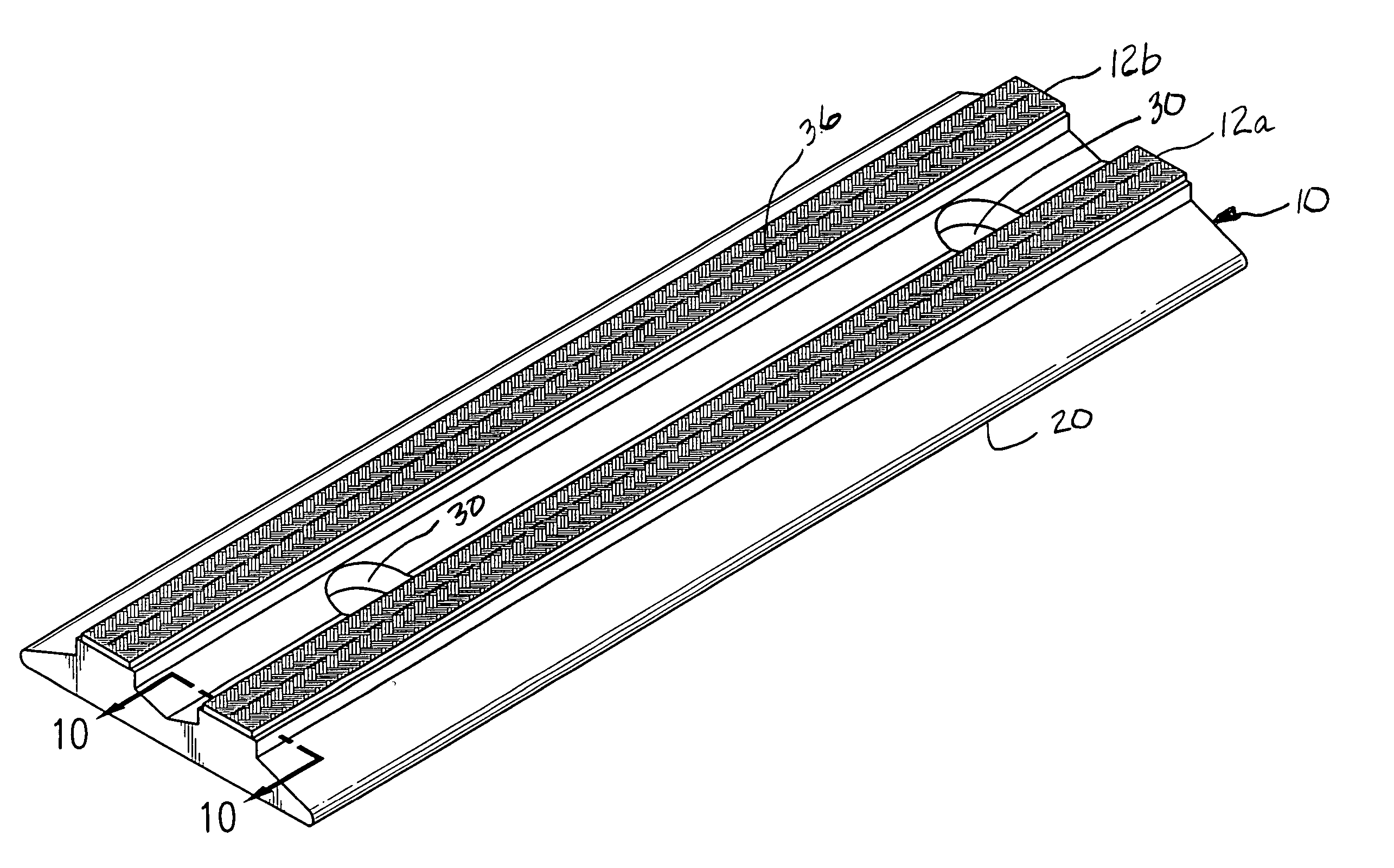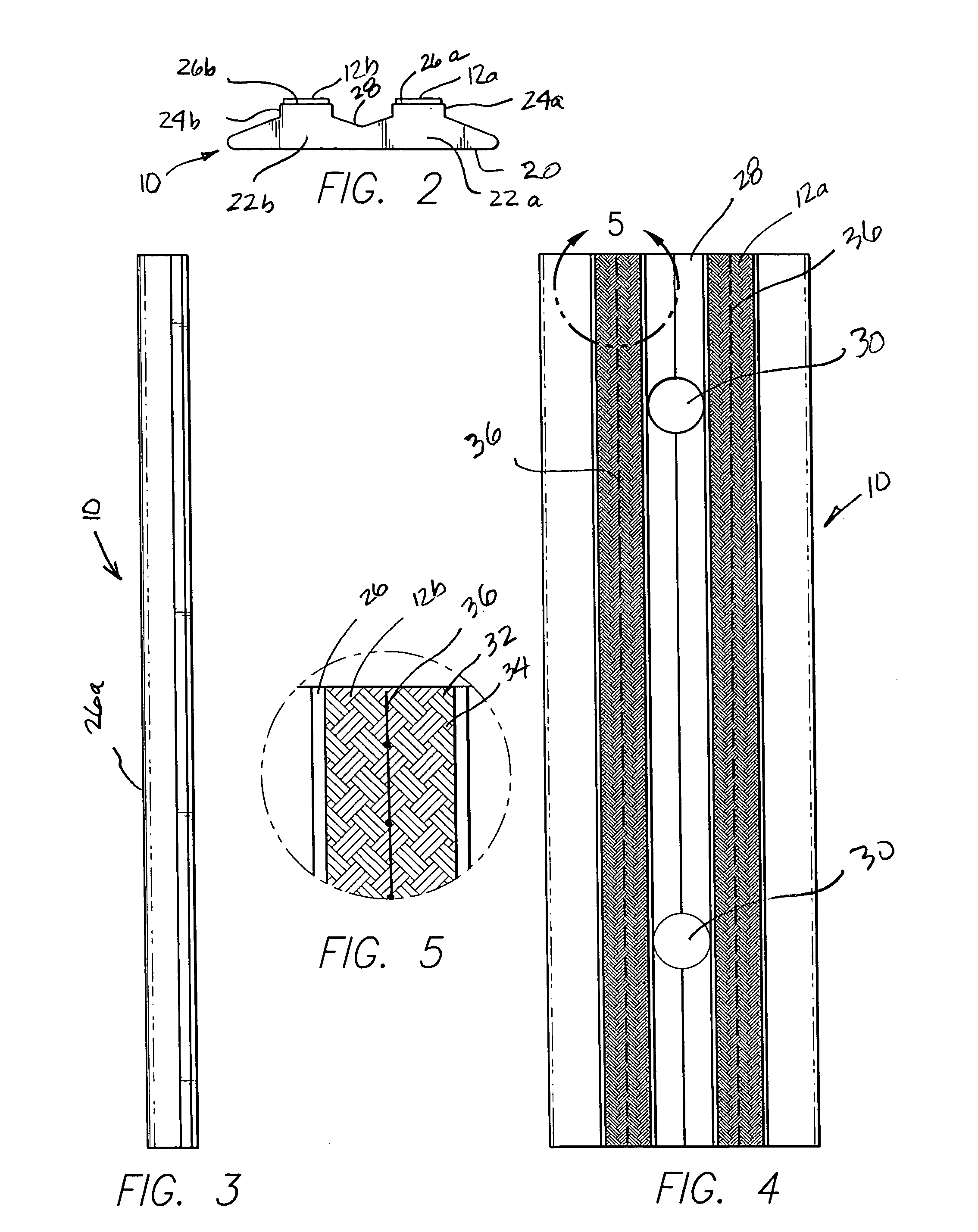Electric deterrent device
a technology of electric deterrent and device, which is applied in the direction of electrical equipment, insect catchers and killers, animal traps, etc., can solve the problem of significant leeway for them to flex
- Summary
- Abstract
- Description
- Claims
- Application Information
AI Technical Summary
Benefits of technology
Problems solved by technology
Method used
Image
Examples
Embodiment Construction
[0023] Looking at FIG. 1, it is seen that the preferred embodiment of this invention is of essentially three-piece construction, having a base 10 and a pair of braided elements 12a and 12b attached thereto.
[0024] The base 10 has a flat lower surface 20 that is presented for attachment to the surface of the location from which the pests or birds are to be deterred. In this embodiment, as best seen in FIG. 2, the cross-sectional shape of the base 10 is essentially co-joined pedestals 22a and 22b that each present an elevated section 24a and 24b, respectively, and each having and upper flat surface 26a and 26b to which the braided elements 12a and 12b are attached. A central gap 28 exists between the two elevated section 24a and 24b, and is useful to provide for water run-off to prevent accidental short circuiting of the device in the presence of water which may accumulate due to rain or irrigation.
[0025] In this embodiment, the base 10 is approximately 1.5 inches wide, and approxima...
PUM
 Login to View More
Login to View More Abstract
Description
Claims
Application Information
 Login to View More
Login to View More - R&D
- Intellectual Property
- Life Sciences
- Materials
- Tech Scout
- Unparalleled Data Quality
- Higher Quality Content
- 60% Fewer Hallucinations
Browse by: Latest US Patents, China's latest patents, Technical Efficacy Thesaurus, Application Domain, Technology Topic, Popular Technical Reports.
© 2025 PatSnap. All rights reserved.Legal|Privacy policy|Modern Slavery Act Transparency Statement|Sitemap|About US| Contact US: help@patsnap.com



